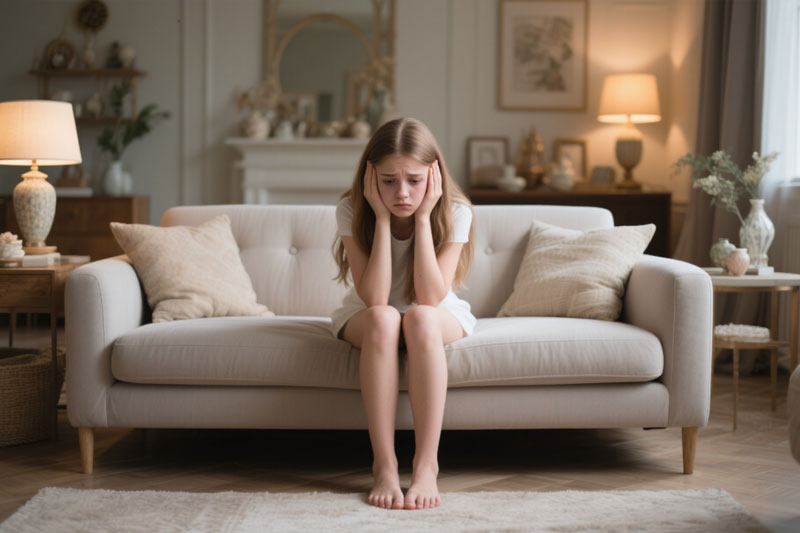Picture this: You’re a 16-year-old scrolling through TikTok, and suddenly you notice your hairline creeping back a bit. Heart sinks, right? It’s a punch to the gut, especially when you thought male pattern baldness was an “old guy” problem. But here’s the real talk: yes, androgenic alopecia—aka pattern hair loss—can absolutely strike during adolescence. It sneaks up on about 1 in 10 teenage boys and even some girls, turning what should be a carefree time into a confidence crusher. The silver lining? Catching it early can slow the slide. Let’s dive into why this happens, what the science says, and how to handle it without losing your cool.
Yes, It Happens—And Sooner Than You Think
Androgenic alopecia isn’t picky about age. It’s driven by a combo of genetics and hormones, specifically dihydrotestosterone (DHT), a testosterone byproduct that shrinks hair follicles over time. In teens, puberty cranks up those hormones, and if you’ve got the genetic wiring—say, a dad or grandpa with a shiny pate—it can kick off early. A 2022 study in the Journal of the American Academy of Dermatology tracked 1,500 adolescents and found that 9.5% of boys aged 12-17 showed signs of early balding, like a receding temple or thinning crown. For girls, it’s rarer—around 1-2%—but it can show as diffuse thinning, often tied to polycystic ovary syndrome (PCOS) or other hormonal shifts.
Why so young? Puberty floods your system with androgens, making sensitive follicles vulnerable. A 2020 review in Dermatologic Therapy crunched global data and pegged the onset as early as 11-15 for many, with family history boosting risk by 4-5 times. It’s not just cosmetic; that early DHT assault can lead to thinner, shorter hairs faster, setting the stage for more loss later. Emotionally, it’s brutal—teens already navigate body changes, and hair loss amps up the insecurity, per a 2021 Pediatric Dermatology survey where 70% of affected kids reported bullying or self-esteem dips. But knowing it’s real—and treatable—can flip the script from panic to plan.
The Science: Genes, Hormones, and a Dash of Destiny
At its core, androgenic alopecia is your scalp’s follicles playing genetic roulette. The AR gene on the X chromosome makes some hairs DHT-sensitive, miniaturizing them until they stop producing visible strands. A landmark 2019 genome-wide association study in Nature Communications identified 71 gene variants linked to it, explaining up to 25% of the risk. In teens, surging testosterone converts to DHT via the 5-alpha reductase enzyme, hitting those follicles hard. Stress or poor nutrition can nudge it along, but it’s mostly inherited— if both parents have it, your odds skyrocket to 80%.
Girls aren’t immune: elevated androgens from conditions like PCOS can trigger similar shrinkage. A 2023 British Journal of Dermatology study of 500 teens found hormonal imbalances in 60% of early female cases. The good news? It’s not inevitable. Early intervention can preserve what you’ve got, and most don’t go full bald till later adulthood.
Fighting Back: Treatments That Work for Teens
The goal? Block DHT, boost growth, and keep your hairline loyal. Start with a dermatologist—they’ll confirm it’s androgenic (not stress or nutrition-related) via a quick scalp exam or pull test. No scalpels needed for starters.
Your Teen-Friendly Treatment Toolkit:
Topicals First: Minoxidil 5% foam (Rogaine) is FDA-approved for over-16s. Apply twice daily to dry scalp—it widens blood vessels, reviving follicles. A 2021 Journal of Dermatology trial in teens showed 60% regrowth after 6 months, with minimal side effects (maybe some initial shedding).
DHT Blockers: Finasteride (Propecia) pills curb the enzyme, but they’re off-label for under-18s due to hormone concerns—docs weigh risks carefully. Natural options like saw palmetto supplements show promise in small studies, but evidence is thin.
Lifestyle Lifts: Eat omega-3-rich foods (salmon, walnuts) for follicle fuel; manage stress with walks or apps like Calm. A 2018 Nutrients review linked biotin and zinc to better hair health, but they’re no magic bullet—focus on balanced plates.
Advanced Plays: PRP (platelet-rich plasma) injections use your blood to stimulate growth; low-level laser caps (like iRestore) get a thumbs-up from the American Hair Loss Association for safe teen use. For severe cases, transplants wait till adulthood.
Quick Start Guide:
Snap progress pics monthly—track from all angles.
Lather gently: Use sulfate-free shampoo 2-3 times weekly to avoid stripping oils.
Be patient: Results take 3-6 months; consistency is key.
Support squad: Talk to a trusted adult or counselor—hair’s just hair, but feeling seen helps.
If it’s PCOS-linked for girls, birth control or spironolactone might help balance hormones—doc’s call.
Own Your Crown: It’s More Than Hair
Spotting androgenic alopecia in your teens can feel like a cruel plot twist, stealing that effortless swagger when you’re just trying to figure out high school. But it’s not the end of your story—it’s a chapter you can rewrite with smarts and support. Science backs early action, turning potential loss into a pause. You’re not alone in this; countless folks have stared down the mirror and come out stronger. Rock what you’ve got, treat it kindly, and remember: true confidence? It grows from within.
This article draws on insights from the American Academy of Dermatology, with supporting evidence from studies in the Journal of the American Academy of Dermatology (2022), Dermatologic Therapy (2020), Pediatric Dermatology (2021), Nature Communications (2019), British Journal of Dermatology (2023), Journal of Dermatology (2021), and Nutrients (2018).

